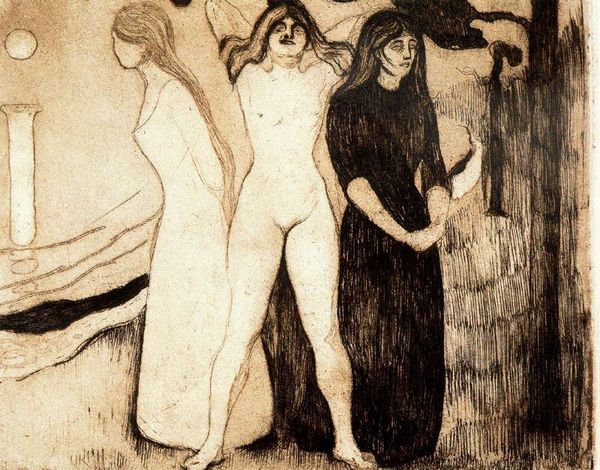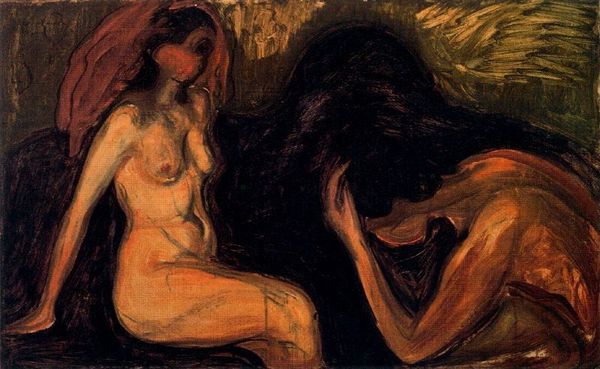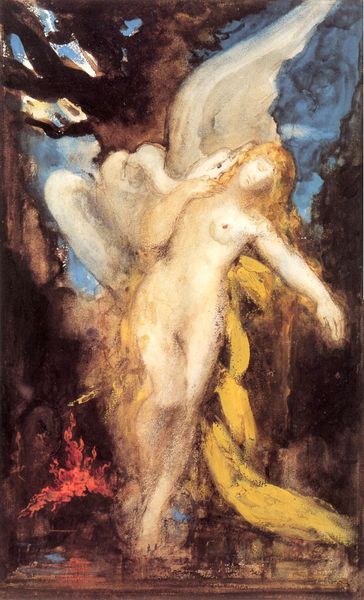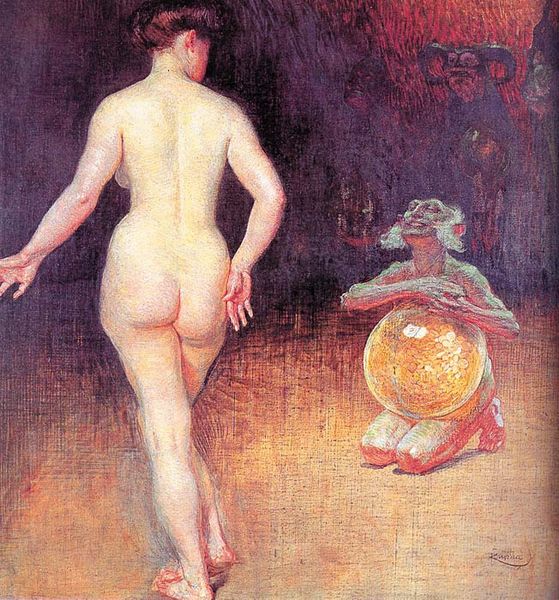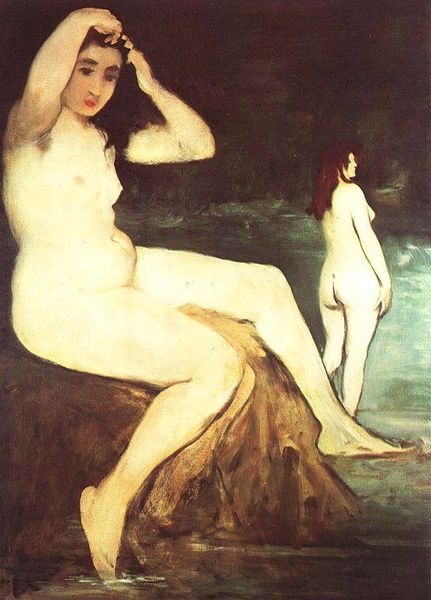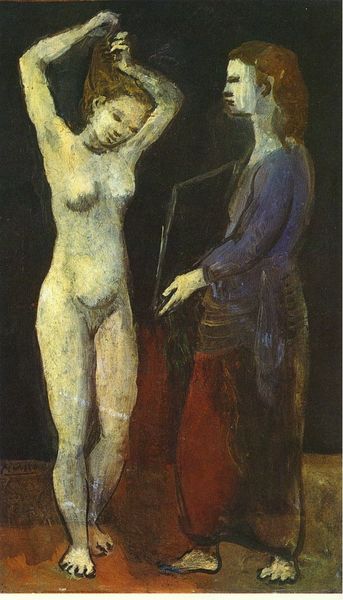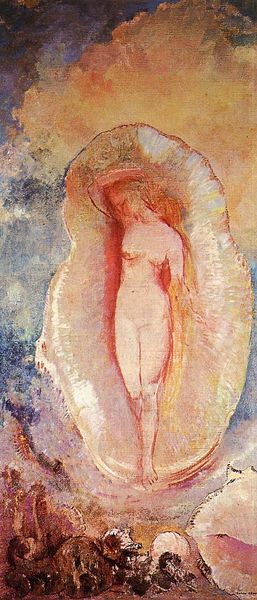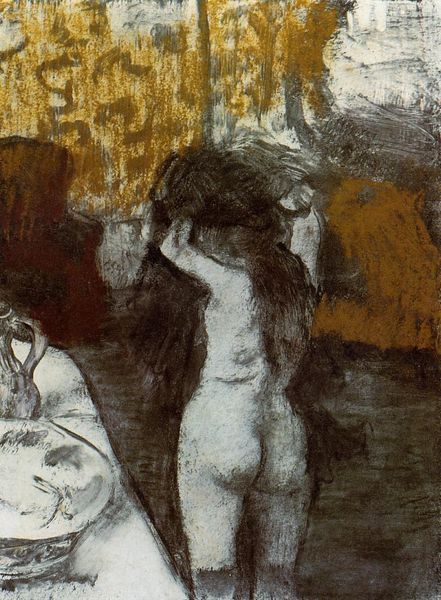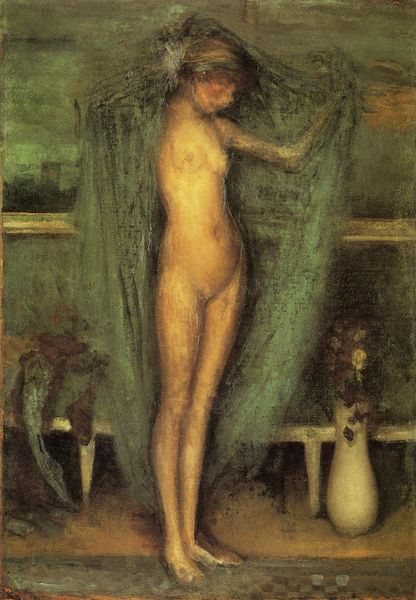
painting, oil-paint
#
portrait
#
allegories
#
allegory
#
symbol
#
painting
#
oil-paint
#
figuration
#
possibly oil pastel
#
oil painting
#
female-nude
#
group-portraits
#
expressionism
#
symbolism
#
history-painting
#
academic-art
#
nude
#
portrait art
#
expressionist
Dimensions: 164 x 250 cm
Copyright: Public domain
Editor: Here we have Edvard Munch's "The Three Stages of Woman," painted in 1894. It's oil on canvas, and immediately strikes me as quite melancholic, with these spectral figures and heavy use of shadow. What do you see in this piece, considering Munch's exploration of form and symbolism? Curator: Primarily, I observe the interplay of lines and color creating a tripartite composition. The ghostly white figure to the left contrasts with the central, nude figure, and the dark figures at right. Note how the swirling lines around the first figure draw our eye into the composition. How might one read the tonal and linear distinctions in this painting? Editor: Well, the figure on the left seems pure, innocent, set against these sinuous, almost flowing lines. The central figure has a more direct, confrontational pose, and uses sharp color tones that make the central subject stand out, then the ones on the right are almost completely obscured. Curator: Precisely. The use of stark color is notable. There’s a tension here; notice how the dark background is flat yet provides depth through contrast. In terms of material engagement, how do you see the layering of paint affecting the viewer? Editor: I suppose that the layering gives each of the figure an ephemeral look that make them look separate, almost unreal, contrasting quite strongly with more academic nudes. Almost like memories fading. Curator: An astute observation. Indeed, one could consider how each figures are treated differently. The texture adds complexity to the narrative. Could it be considered an emotional mapping rather than just visual. I think in order to interpret what each layer signifies or tells might open another way to look at each. Editor: I see that. I never considered analyzing paintings that way. Now I have an alternate approach to view Munch's visual texture as something that represents a whole symbolic language. Curator: Indeed, paying attention to visual construction of painting allow one to see deeper.
Comments
No comments
Be the first to comment and join the conversation on the ultimate creative platform.
